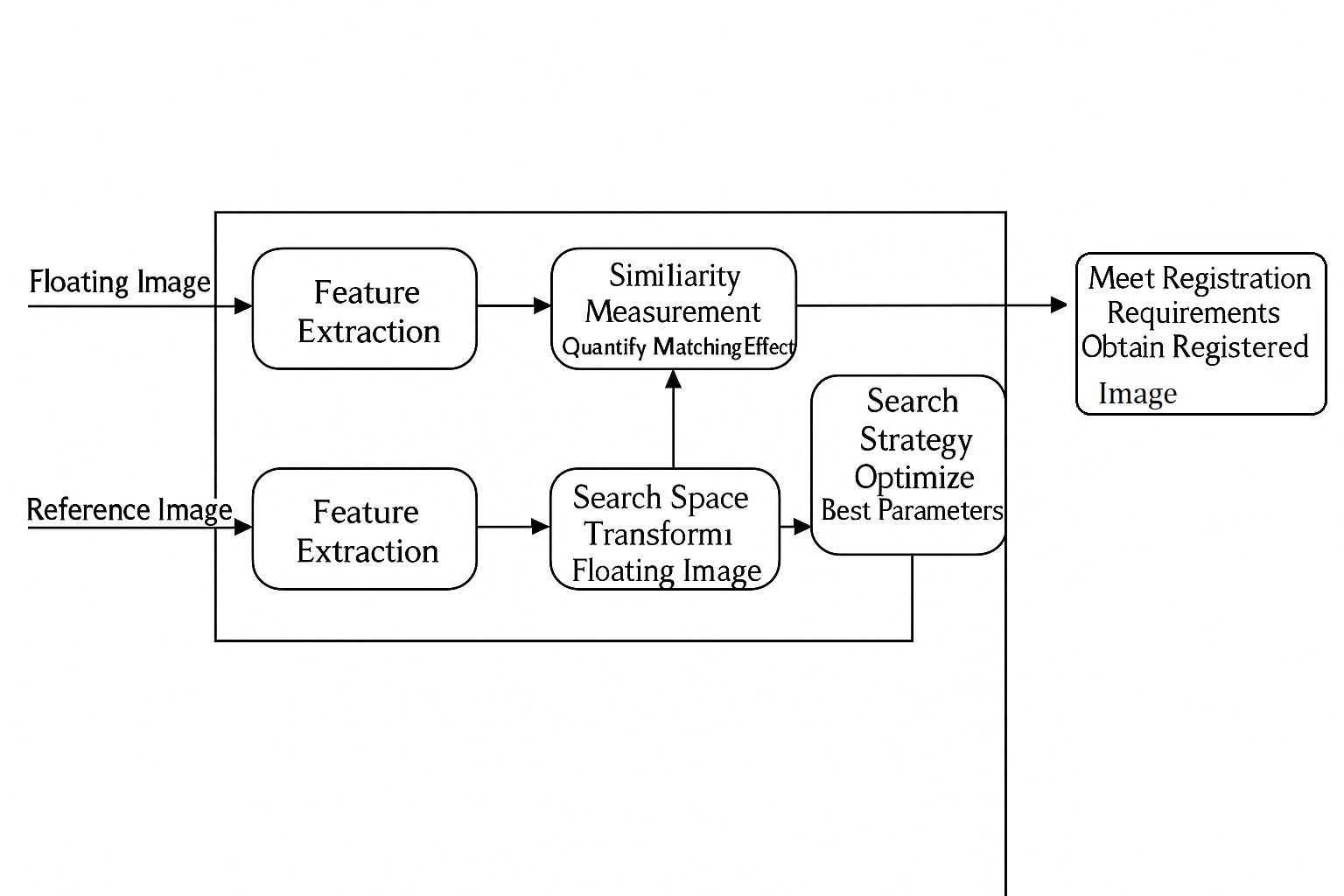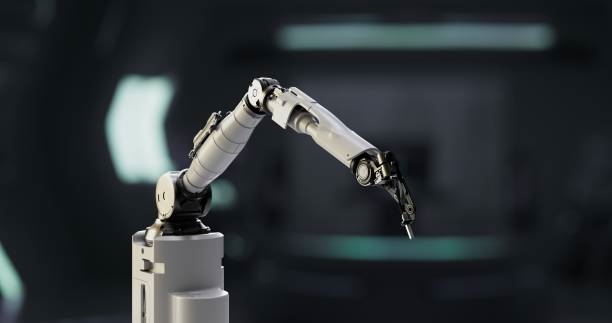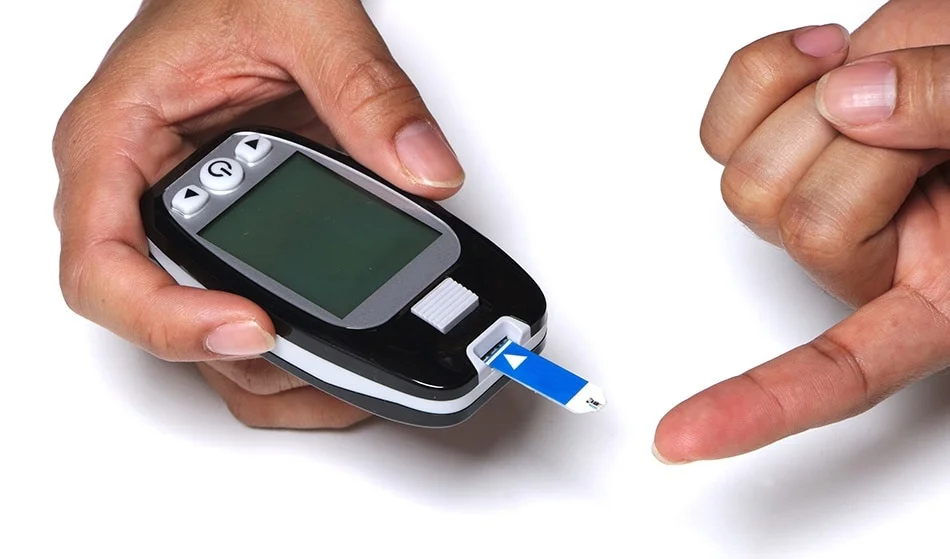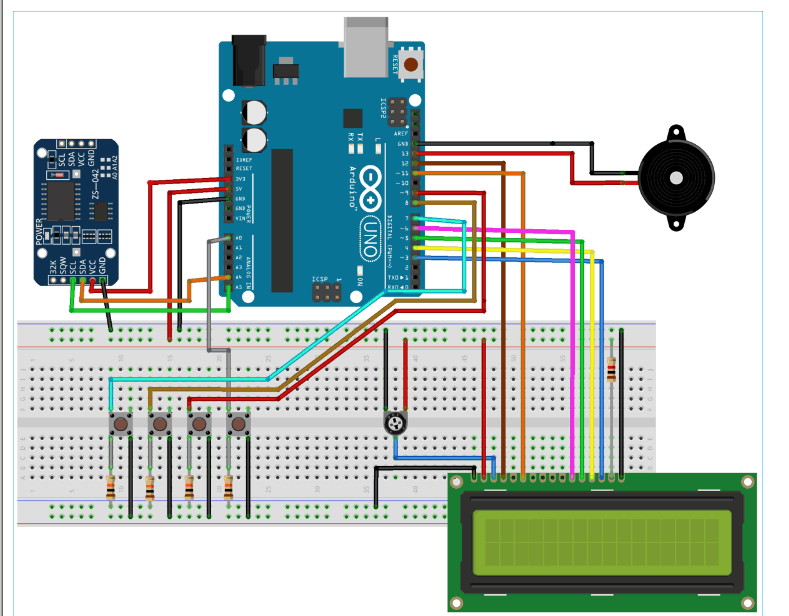Overview
Registration is the process of spatially aligning images acquired by the same sensor at different times, under different backgrounds or viewing angles, or images acquired by different sensors at the same time.
The key is how to find the spatial transformation T, or how to iteratively approximate T. In other words, it is finding a mapping such that corresponding points in different images match (consistency of pixel spatial positions).
Components of a Medical Image Registration Algorithm
An image registration algorithm typically consists of the following elements:

Feature space (extract relevant information)
Search space (how the spatial transform is modeled)
Similarity measure (evaluate each transform)
Search strategy (decide the next step)
In short, extract the needed "raw materials" from the image to be registered (feature space), match them to the reference image using a chosen transform model (search space), evaluate the matching result (similarity measure), and then determine the next transform update (search strategy).
Feature Space
Features are image elements that remain consistent under different conditions and are relatively robust to noise. Examples include intensity (gray value), lines, contours, edges, points, surfaces (3D), corner points, or measures of feature strength.
The choice of feature space is important because it determines which registration method is appropriate.
Search Space (Transform Models)
Spatial transform scope: global transforms apply the same parameters to the whole image; local transforms allow different parameters for subregions.
Common transform models: rigid transform, affine transform, projective transform, and deformable (nonrigid) transform.
Similarity Measures
The similarity measure changes with the geometric transform applied during registration. There is no single fixed metric for all registrations; it may vary depending on the data and transform.
Examples of algorithms and measures include:
- SSD: sum of squared differences
- SAD: sum of absolute differences
- NCC: normalized cross-correlation
- Mutual information (MI), based on Shannon entropy and information theory
Search Strategy
Registration is a multi-parameter optimization problem involving many feature correspondences. Finding an optimal transform in the presence of multiple local extrema is the central challenge.
Common optimization methods include least squares, Powell's method, downhill simplex, Levenberg-Marquardt, Newton iteration, conjugate gradient, random search, steepest descent, relaxation matching, genetic algorithms, and simulated annealing.
Medical Imaging: Purpose and Modalities
Medical imaging can noninvasively provide structural and functional information about human tissues and organs.
Anatomical Imaging
Characteristics: depict the anatomy of tissues and organs.
CT images: dark regions indicate low absorption, bright regions indicate high absorption. Contrast reflects tissue thickness and density. CT provides high clarity for bone and some soft tissues but exposes the patient to ionizing radiation.
MRI: provides good soft-tissue contrast without ionizing radiation, but it is more expensive, can produce artifacts, and acquisition times are longer.
Functional Imaging
Characteristics: describe the activity or state of tissues and organs under different conditions.
Functional imaging reflects internal chemical and metabolic states. By registering images acquired at different times, clinicians can assess disease progression or recovery and enable early diagnosis by detecting internal changes that lead to external manifestations.
An example modality is emission computed tomography (ECT), which uses gamma-ray imaging to map the distribution of radioactive tracers and infer morphology and function.
Applications of Image Registration
Image registration is used in visual pattern recognition, medical image analysis, remote sensing, and national security and defense applications such as detection, identification, and tracking of targets.
 ALLPCB
ALLPCB







